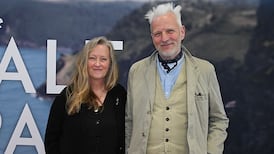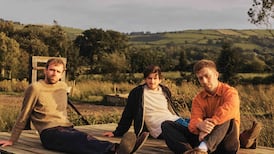A spark that ignited in late 2017 caught light, with a managed blaze now in the open. That fire has exposed, through carefully anonymised reporting, bullying, harassment, sexual harassment, humiliation, victimisation, assault and sexual assault as likely an accepted norm across Ireland’s arts sector.
The exposition is new research, Speak Up: A Call for Change, published by the Irish Theatre Institute (ITI).
The initial spark was allegations of inappropriate behaviour and sexual harassment against former Gate Theatre artistic director Michael Colgan – claims he has denied – which emerged in 2017, following his retirement after 33 years. Since then various unrelated rumours and allegations about others across the arts have done the rounds, not yet aired publicly.
Movements including Fair Plé, Mise Fosta, Safe Arts of Ireland emerged, focusing on women’s experiences of bullying and harassment in the wider arts sector. Irish Theatre Institute directors Siobhan Bourke and Jane Daly broadened their Speak Up initiative to make work safer, from theatre to the broader arts sector, with Department of Culture and Arts backing.
Behaviours and incidents
This research may draw attention to behaviour and incidents, given the numbers anonymously reporting; others may be examining their consciences.
A desolate, grim read, it paints a picture of abusive behaviours across the sector, often against women and freelancers in precarious roles, without supports or anywhere to turn, with the accused often in a position of authority. The report describes “a culture of acquiescence and acceptance evident across this survey’s data”, influenced by “power dynamics that allow perpetrators to have a disproportionate amount of control and power”.
It is for many “an acknowledgement of a reality that has been hiding in plain sight”.
While the stats are dismaying (70 per cent of those surveyedsay they have experienced harmful behaviour), the report makes clear respondents were self-selecting, so it is not necessarily representative of arts workers overall. But it does indicate an environment where bullying and harassment are not exceptional and “may be an accepted part of working life”.
As #MeToo has spotlighted, bullying and harassment are pervasive, and harmful workplace behaviour is not exclusive to the arts world. But Speak Up points to specific factors making it particularly susceptible, saying the imbalance of power often within artistic employment relationships is “at the heart of the matter”.
Precarious work and gender are key to the dynamic of workplace abuse. In Ireland in 2019, 78 per cent of performing arts workers had precarious work. There’s an “increased risk of abuses of power” in arts, where limited opportunities and limited employers “create a fertile landscape for abuse to take place and flourish”.
‘Artistic temperament’
The report observes “the trope of ‘artistic temperament’ justifying bullying and harassing behaviours [and allowing] them to flourish unchecked”.
Because the data is aggregated, with rigorous anonymity and coding of incidents, it’s initially hard to discern the severity of “harmful behaviours”. Lead researcher Dr Ciara Murphy recognises “harm is a spectrum and it can go from what you might consider to be a minor incident to quite severe, some of which you could consider criminal. The research team didn’t feel it was within its scope, or ethical, to create a hierarchy of harm.”
But glimpses of what’s at issue are seen in an appendix, in the coding categories for open-ended comments: “Fear of blacklisting, being seen as a troublemaker”; “Inappropriate behaviour ‘accepted’/‘normalised’/‘everyone knows’; “Artistic quality/reputation should not ‘protect’ perpetrators.”
Categories of behaviour reported are telling too: exploitation; pressure to avoid reporting and speaking up; inner-circles with certain figures protected; inappropriate behaviour accepted/normalised; pressure to accept uncomfortable activity (eg nudity, risk); behaviour must be endured to maintain position; unclear boundaries between work and leisure.
Many responses say abusive behaviour “had no consequences or was not taken seriously”, while in other cases “reporting makes situation worse or were not believed” or resulted in “people leaving/avoiding/being shut out”.
The good news is that as well as enumerating the problem, Speak Up points to the future, with voices of those surveyed as “agents of change”. Along with a new organisational toolkit, there are “realistic and achievable recommendations” on leadership, zero tolerance, culture change, with mechanisms for reporting backed by the Department of Arts. Hopefully this fire is well lit.












